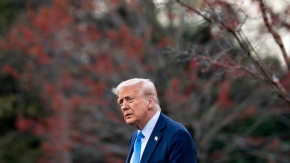It would be fair to say that this decade has been defined, at least in part, by conflicts. Indeed, the world is living through a degree of geopolitical uncertainty arguably not seen since the Berlin Wall fell.
And in common with the cold war era, spending on defence is back in fashion, with a large number of European leaders having committed to significant increases in defence spending in the face of the transatlantic alliance’s uncertain future.
That has sent European defence stocks soaring with the Financial Times describing a “blistering rally”. That is hardly surprising given that European governments can be relied upon to start writing substantial cheques to support defence investment.
However, due to budgetary pressures, the reluctance of recently elected European governments to break manifesto pledges on tax increases and in the absence of significant and sustained economic growth, European governments will also need to find alternative sources of capital to fund their planned investments.
There are large reserves of private capital available that European governments could tap into to support their ambitions, and it is evident from the sharp rise in share prices that investors are now turning their attention towards defence companies. But obstacles to the success of the alliance of public and private capital remain.
The external risk factor
In most countries, clearances will need to be obtained by investors who wish to complete a transaction that touches the defence sector, so transactions will be conditional on such clearances being given.
For example, the provisions of the UK’s National Security and Investment Act 2021 lists defence as one of 17 high-risk areas where prospective investors will have to comply with a mandatory notification requirement. Whilst rarely exercised in practice, the NSI Act also gives the government wide-ranging powers to block proposed transactions.
In the event that clearance to complete the transaction is denied, this will leave the prospective buyer out of pocket with an irrecoverable cost that will ultimately fall on either the underlying investors and/or, in the case of private equity sponsors, the management company.
Even prior to the execution of any transaction in the defence space, a private equity fund and its advisers are likely to need to obtain security clearance for named personnel to gain access to certain sensitive information about the target company during the due diligence process. Restrictions on reporting may prevent a private equity fund from getting full visibility on the targeted company’s business.
Scrutiny from the media and wider public may also add an unwelcome complication, with weapons manufacturing likely an emotive topic. In an increasingly multi-polar world, there is also the risk of coming under surveillance and/or attack by hostile domestic and state actors, which is likely to entail increased security costs and unlikely to be welcomed by fund managers, with recent reports of attacks on defence facilities highlighting the risks faced by defence businesses.
An ESG challenge?
Environmental, social, and governance investing is an increasingly prominent and permanent part of finance. This is a potential problem when it comes to defence spending as many funds will have prohibitions written into their fund documents restricting their ability to make investments into this sector.

Are sustainability fears overblown in the Trump era?
While fund documents can be amended, this process is not necessarily straightforward. Further, even in the absence of such restrictions, fund managers may be reluctant to invest in companies directly manufacturing offensive weaponry, in part to avoid the risk of their investors having their own internal policies restricting their ability to commit capital to a particular fund manager as well as the scrutiny, surveillance and/or attack risks identified above.
It is possible that companies that are involved in making defensive weaponry, for instance weapons designed to shoot down and intercept enemy missiles or drones, would be seen as less problematic, as might investments in companies with both defence and civilian arms. But that uncertainty is still likely to be uncomfortable for a lot of fund managers, not least given the risk of objections from a fund’s investors.
An alternative route
The regulatory hurdles and external scrutiny will need to be assessed on a case-by-case basis. But the ESG obstacle can be surmounted.
Funds looking to invest in the defence sector (which are not prohibited under their fund terms) could look to rebadge themselves as ‘ESSG’: environmental, social, security, and governance funds. Given the increasing prevalence of ESG, although such a rebadging would in some sense be no more than semantics, an increasing number of funds may look to such semantics to broaden the base of their investments.
This is not likely to make defence businesses and ESSG funds natural bedfellows. However, it may make investing in this sector more straightforward and easy to justify for these funds, as well as helping European governments with the increasingly pressing need to re-arm.
Indeed, this process is already underway, with ESG funds holding €8bn (£7bn) in defence stocks by Q4 of 2024 compared with €2.7bn in the first quarter of 2022. Governments, financial watchdogs and industry bodies have also argued that defence investments can be sustainable; last year Britain’s finance ministry issued a joint statement with the Investment Association that said investing in defence companies contributes to Britain’s national security.
This suggests that it is perhaps past time to acknowledge the growing and vital importance of security, and remove the apparent illusion that it is not part of the ESG landscape. Without security for nations and companies to operate in, one could argue there may be no ESG at all.
Tom Whelan is a partner at Reed Smith








